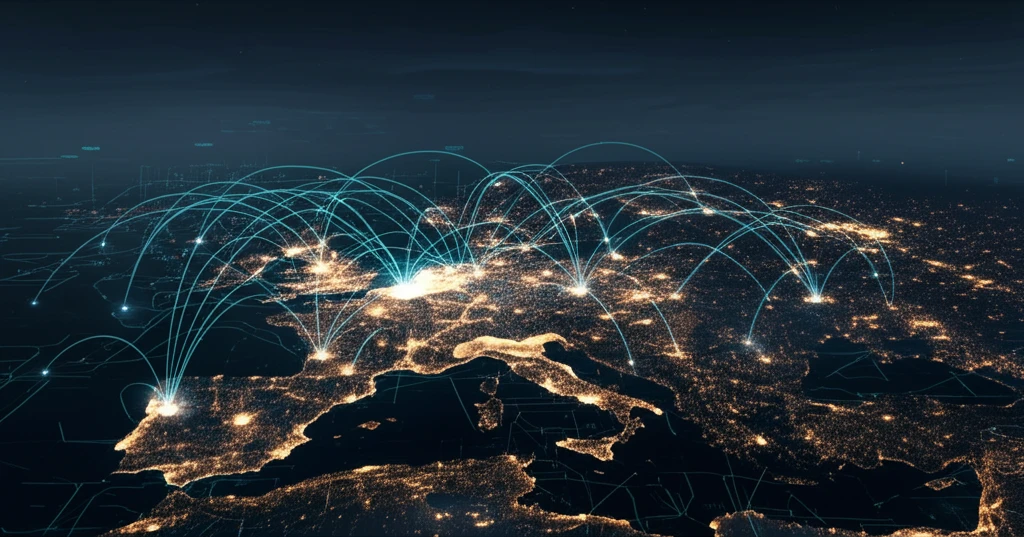
Decoding the Future: How AI and Agent-Based Modeling are Revolutionizing European Electricity Markets
"A Deep Dive into ATLAS: Navigating Uncertainty and Balancing Act in Short-Term Energy Processes"
The European electricity market is undergoing a significant transformation, driven by the need for greater efficiency, reliability, and sustainability. Traditionally, balancing supply and demand was managed locally, leading to fragmented approaches and limited coordination. However, with the rise of renewable energy sources and increasing cross-border energy flows, a more integrated and dynamic approach is essential.
Enter ATLAS, an agent-based model (ABM) designed to simulate and optimize short-term electricity market processes in Europe. Unlike traditional models, ATLAS captures the complexities of the market by representing individual actors, such as energy producers, consumers, and grid operators, as autonomous agents that interact with each other based on predefined rules and algorithms. This allows for a more realistic and granular simulation of market dynamics, enabling stakeholders to make informed decisions and mitigate risks.
This article explores how ATLAS, complemented by research outlined in "ATLAS: A Model of Short-term European Electricity Market Processes under Uncertainty," leverages sophisticated algorithms and AI techniques to address the challenges of balancing electricity supply and demand in a rapidly evolving landscape. We will dive into the specifics of ATLAS’s balancing modules, highlighting their innovative features and potential impact on the future of European energy markets. We will cover key parts from the research including BSP orders, TSO orders and the balancing mechanism with a focus on simplicity.
What are Balancing Markets and Why Do They Matter?

Balancing markets are crucial for maintaining the stability and reliability of the electricity grid. These markets operate in real-time, ensuring that supply and demand are constantly aligned. Think of it like a conductor leading an orchestra: balancing markets coordinate various energy sources to maintain a consistent frequency and voltage on the grid.
- Frequency Containment Reserves (FCR): The speed responders, activating within seconds to arrest frequency deviations.
- Automatic Frequency Restoration Reserves (aFRR): Kicking in around 30 seconds to restore frequency to its target level.
- Manual Frequency Restoration Reserves (mFRR): Taking over from aFRR in about 12.5 minutes, requiring manual activation.
- Replacement Reserves (RR): Activated manually in 30 minutes to fully compensate for the activation of other reserves.
The Future of Energy: A Balanced and Optimized Grid
As Europe continues its transition to a cleaner and more decentralized energy system, the importance of sophisticated modeling tools like ATLAS will only grow. By leveraging AI and agent-based modeling, we can unlock new levels of efficiency, resilience, and sustainability in our electricity markets, paving the way for a brighter energy future. The future of energy isn't just about generating clean power, it's about managing it intelligently.
